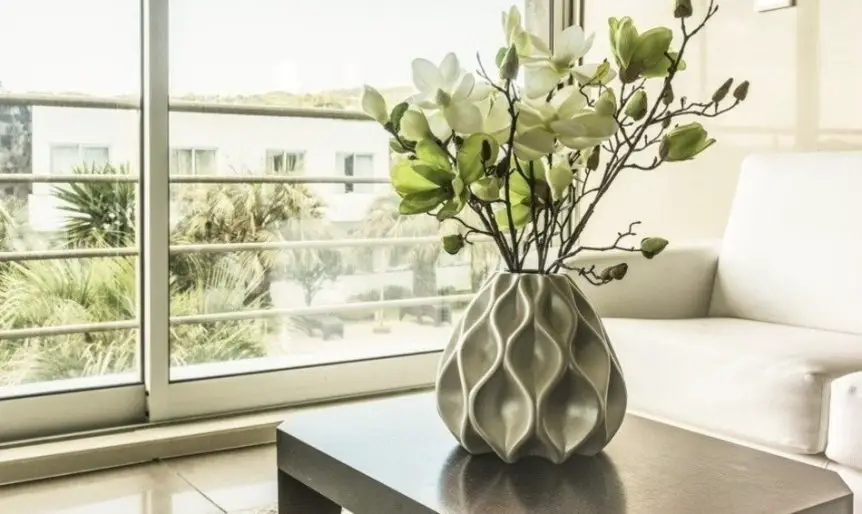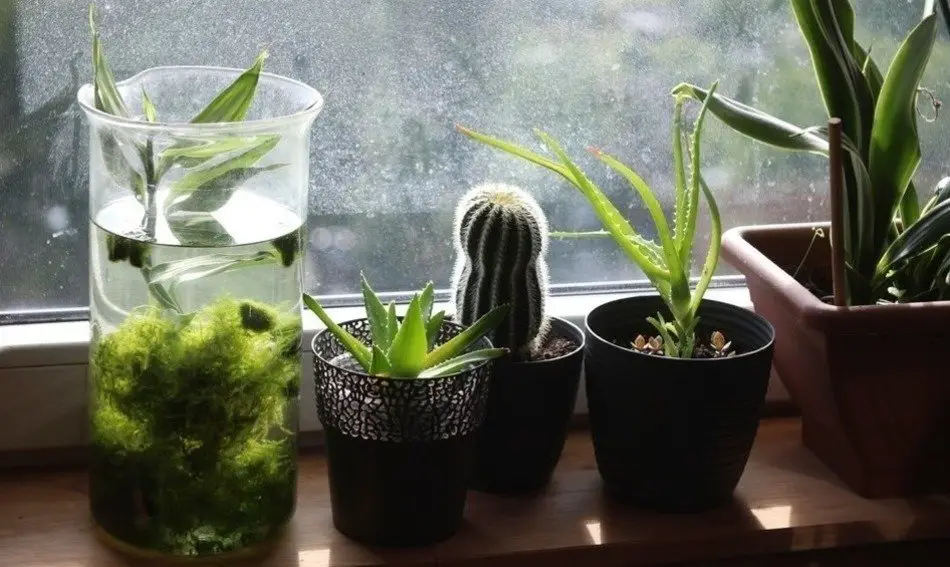
In addition to man-made air purifiers, you can also use plants to purify the air in your house. This ability of plants to clean the air was formally discovered in 1989 by NASA scientists as they tried to find ways to improve air quality for astronauts while in space.
Unlike on earth where you can just plug an air purifier into an airplane, and it replaces the air in your cabin with fresh air from outside the aircraft, in space there is no air. As a result, you have to find a way to clean air pollutants without replacing your current air with new air and some clever NASA scientist came up with plants as a solution.
Nasa published their study results and the results revealed that various plants are able to remove several Volatile Organic Compounds (VOCs) and toxins in the air including, formaldehyde, trichloroethylene, benzene, ammonia, xylene, and some insect and microorganism fecal matter. Before I start with the long list of plants, let’s briefly look at these pollutants more closely.
- Formaldehyde is found in natural gas, cigarette smoke, upholstery, carpets, and plastic tableware. If your home is polluted with formaldehyde it can cause skin problems, irritation of your mucous membrane, and flare up asthma. This gas is infamous for causing “sick building syndrome”.
- Trichloroethylene is present in many fabric cleaners and can also be found in chlorinated water. It is also found in paints, lacquers, printer inc, and carpets. It causes liver and kidney damage and triggers psychomotor agitation. It causes skin and eye irritation and long term exposure to it can result in cancer.
- Benzene is also in cleaning products, lacquers, and paints. Additionally, benzene is present in cigarette smoke and varnishes. As a carcinogen, it is known for causing leukemia. Its short term effects include convulsions, shortness of breath and similar psychological effects to those caused by alcohol.
- Ammonia is similarly present in household cleaners and cigarette smoke but its also surprisingly found in computer parts. It causes swelling of the lungs and larynx and chest pains and it can give you a cough and a sore throat.
- Xylene is used to manufacture lacquers, plastics, glue and paint. It causes skin, eye and respiratory tract irritation. You will also find it in leather products, cigarette smoke, and vehicle exhausts.
Each of these pollutants can be removed by at least one of the plants I list below and some plants are able to remove up to four of these pollutants. In general, as part of their respiratory process and photosynthesis plants draw carbon dioxide out of the air through small pores under their leaves called stomata.
Through this very respiratory process, they are also able to remove the above listed pollutants from the air and synthesize them releasing oxygen and water back into the air. To get the most out of plants in removing air pollutants, NASA recommends 1 plant for every 100 sq ft of indoor space. Let us now look at the different plant.
The Detailed List Of Plants That Can Clean Your Indoor Air
1. Geranium (Pelargoniums)
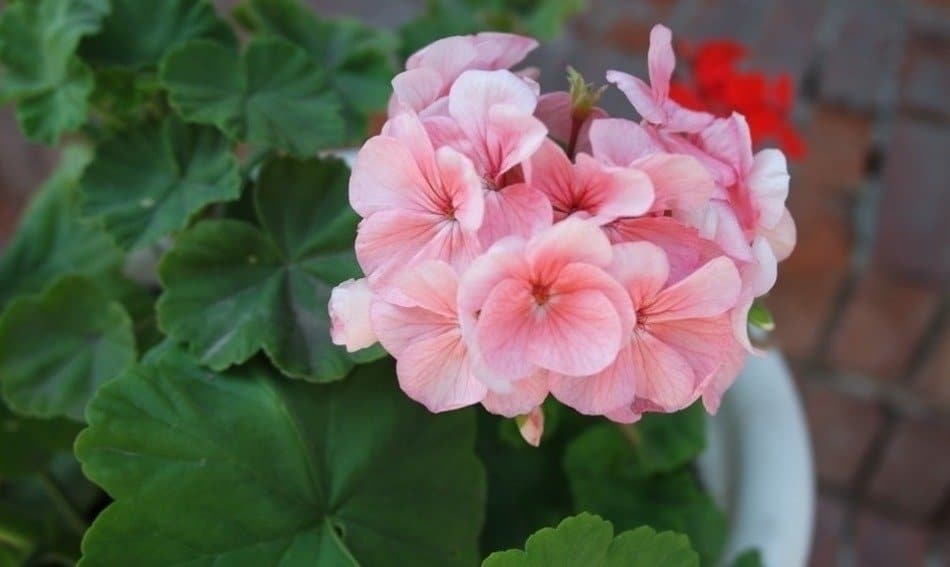
In a study of over 86 plants, Pelargonium (Geranium) plants were found among the most effective to get rid of formaldehyde in indoor air. This is good news as there are just over 200 kinds of Geranium. Besides cleaning your air, they produce a great aroma (some people may not be able to stand it), repel mosquitoes, and they don’t attract as many parasites as most plants usually do.
Geraniums can live with no watering for up to 2 weeks and don’t need much care. They thrive and blossom well in sunshine and are great plants if you are a beginner at keeping plants. They are usually not harmful to pets and humans and some species can be used to make an herbal tea that helps to lower blood glucose levels if you have diabetes.
2. King of Hearts (Homalomena Wallisii)
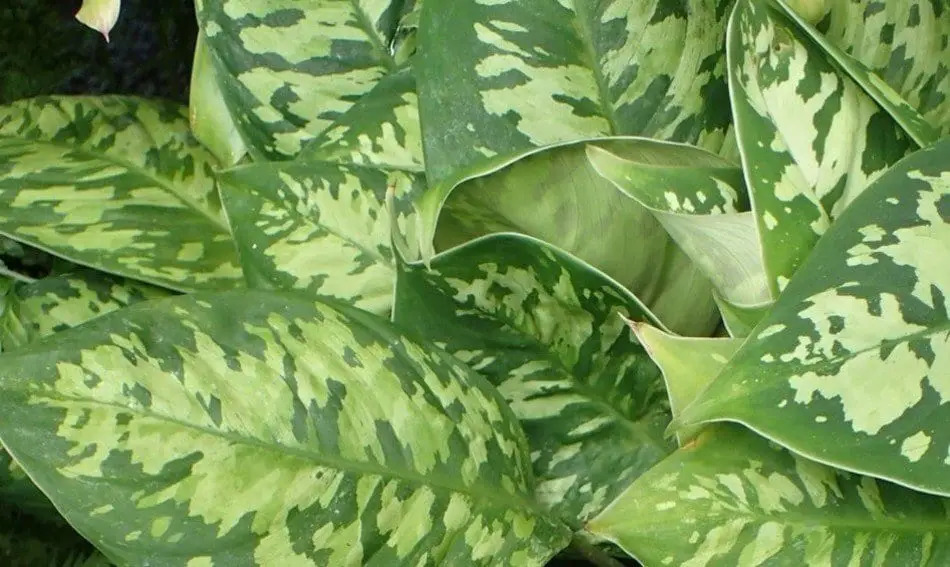
The King of Hearts if quite effective in removing ammonia from indoor air. Its commonly used in offices as compared to homes. It is toxic and not safe for cats and dogs. To maintain this plant you have to keep it in mid-shade to shade and avoid drafts, and excessive heat. Its quite a sensitive plant and if kept in an area that is too warm and dry, it is prone to spider mites infestations. To keep this plant in good condition make sure its soil is evenly moist with soft water and where possible use rain water or purified water. Feed the King of Hearts with a weak concentration of fertilizer as it grows and place it in pot with good drainage.
3. Croton
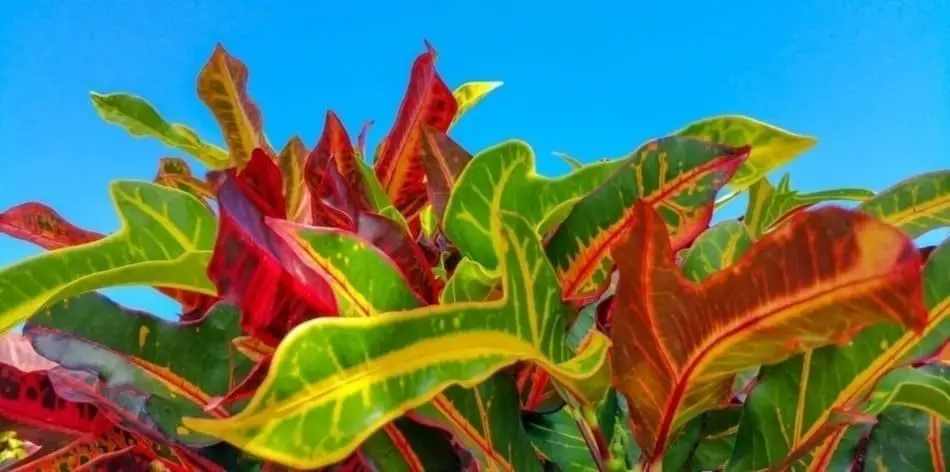
There are a number of varieties of Crotons and they are all good at removing formaldehyde from the air. Crotons also have a very rapid transpiration rate, which allows them release large volumes of oxygen into your indoor air. Their leaves are quite thick and fibrous and the plant will thrive as long as you wipe its leaves down with a cloth often and you provide it with full exposure to the sun.
Crotons also do not like the cold but keep them in temperatures below 80 degrees Fahrenheit and keep their soil moist but not wet. They are poisonous plants for both humans and animals so take the necessary precautions if you decide to own a Croton.
4. Poinsettia (Euphorbia Pulcherrima)

Poinsettias are good for reducing the amount of formaldehyde in your air. This plant enjoys sunlight and warmth but keep it away from drafts. It does well on windowsill as long kept closed. Poinsettias are happy with temperatures of between 15 – 20°C. This plant is mildly toxic but not deadly. If pets or children swallow it it can cause mouth rash and stomach upsets. Its sap can also cause skin rash.
5. Peacock Plant (Calathea Makoyana)
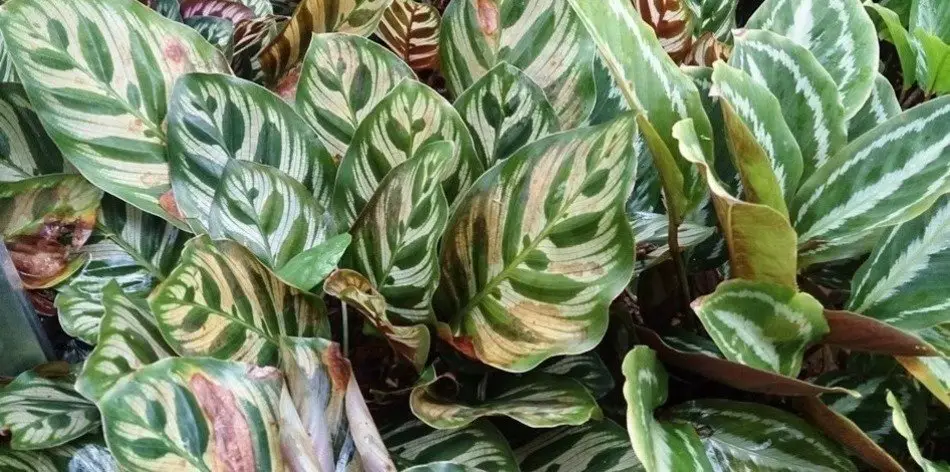
This plant extracts ammonia out of the air. It’s hard to take care of and not recommended for a beginner at growing plants. It a semi shade plant that also needs the right level of humidity. It’s not toxic to animals and it’s also not harmful for humans.
6. Christmas Cactus (Schlumbergera)

I could not find exactly which chemical vapor it removes but the Christmas cactus peculiarly clears the air of carbon dioxide and releases oxygen. This is strange plant behavior as a normal plant starts releasing carbon dioxide at night and absorbing oxygen. Accordingly the Christmas cactus it touted as the one of the best plants for your bedroom.
It’s a trick one to take care of. It has to have the right amount of water, not too little and not too much. You have to ensure their pot drains well and keep them in bright but indirect sunlight. They need 14 hours of darkness and 8 hours of bright light. Christmas Cactus are not toxic to dogs or humans but can cause stomach upsets fi swallowed.
7. Kimberly Queen Fern (Nephrolepis obliterata)
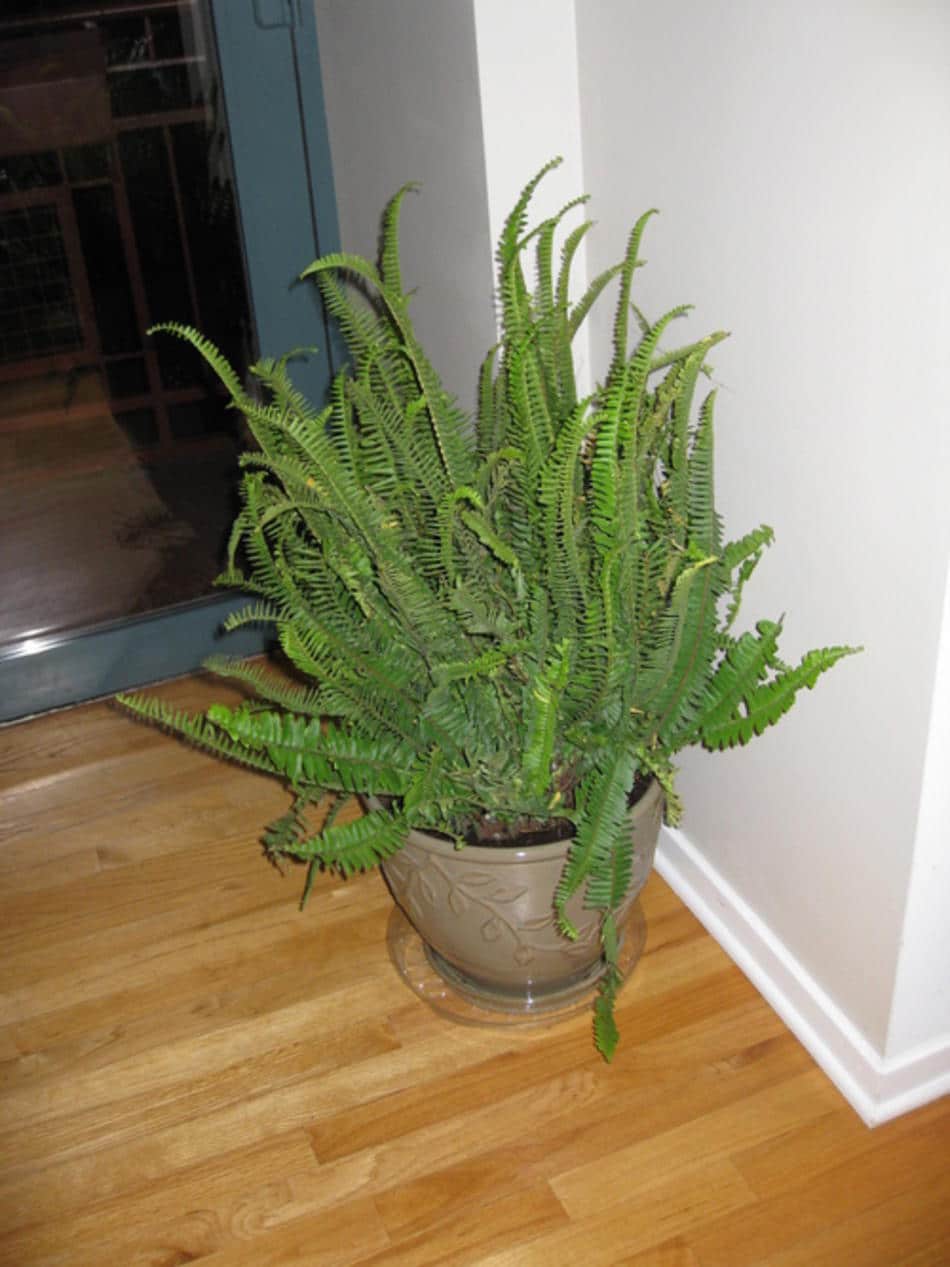
Queen Ferns will clear your air of formaldehyde and trichloroethylene. They are not difficult plants to care for and they are not dangerous for humans or pets. They prefer indirect sunlight but can survive direct sunlight if watered properly.
8. Lilyturf (Liriope spicata)
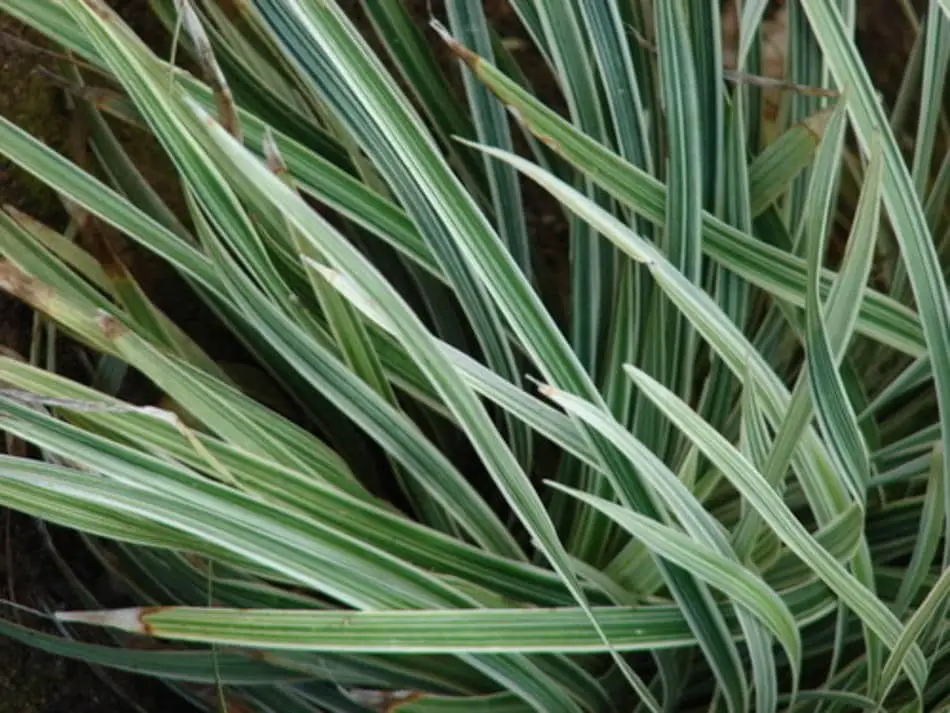
Lilyturf filters formaldehyde, ammonia, xylene and toluene from the air. Lily Turf does not do well in excessively dry air and if you see pests on it these are telltale signs that the air is too dry for your plant. As it dislikes dry air this plant needs water constantly and so you have to keep its soil moist. Place this plant in loose-mix potting soil for good drainage and fertilize every month except during winter months. The plant is a semi shade plant.
9. Dendrobium Orchids (Dendrobium spp.)
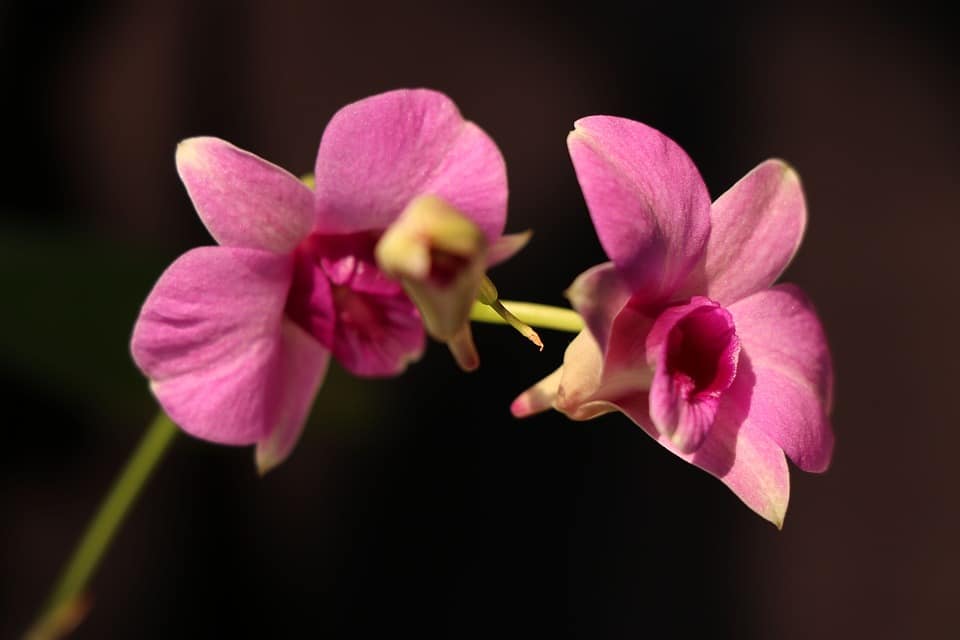
This plant will cleanse your air of xylene and toluene. There are over 1800 species of dendrobium orchids and they survive in climates ranging from dry to tropical. This plant needs indirect but high intensity light. Its best kept on your windowsill. The watering can be quite complex depending on whether you are in winter or summer. You have to water the plant with lukewarm water and only once a week and even less during winter and if you want it to bud. Check out this article at Orchid Made Easy for more detail on how to care for this plant. This orchid is non-toxic and not harmful to humans or animals.
10. Dwarf Banana (Musa Cavendishii)
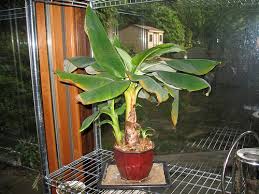
This is a mini banana tree you can keep indoors and it can get rid of formaldehyde in your air. There is not much that goes into taking care of one of these. Just keep the soil moist with lots of mulch and direct sunlight and you are good to go. This plant can stay for a couple of weeks without watering and its not toxic to animals or humans.
11. Mass Corn Plant (Dracaena Fragrans “Massangeana”)
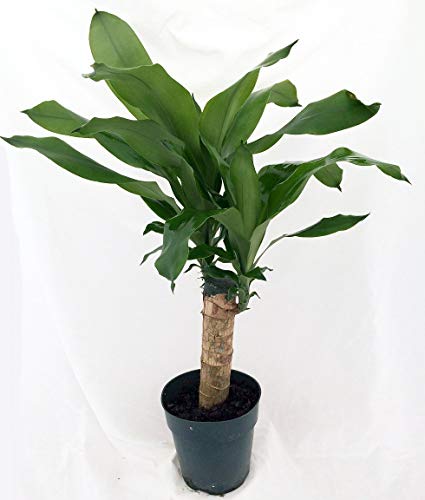
The mass corn plant removes, benzene, formaldehyde, and trichloroethylene. They do well in light shade or filtered sunlight. When watering, you will do well to let the top soil dry first before you water your plant again. The corn plant likes a reasonable humidity level otherwise if its outside its comfort zone you start to see blemishes on its leaves.
12. Ficus Alii (Ficus Maclellandii Alii):
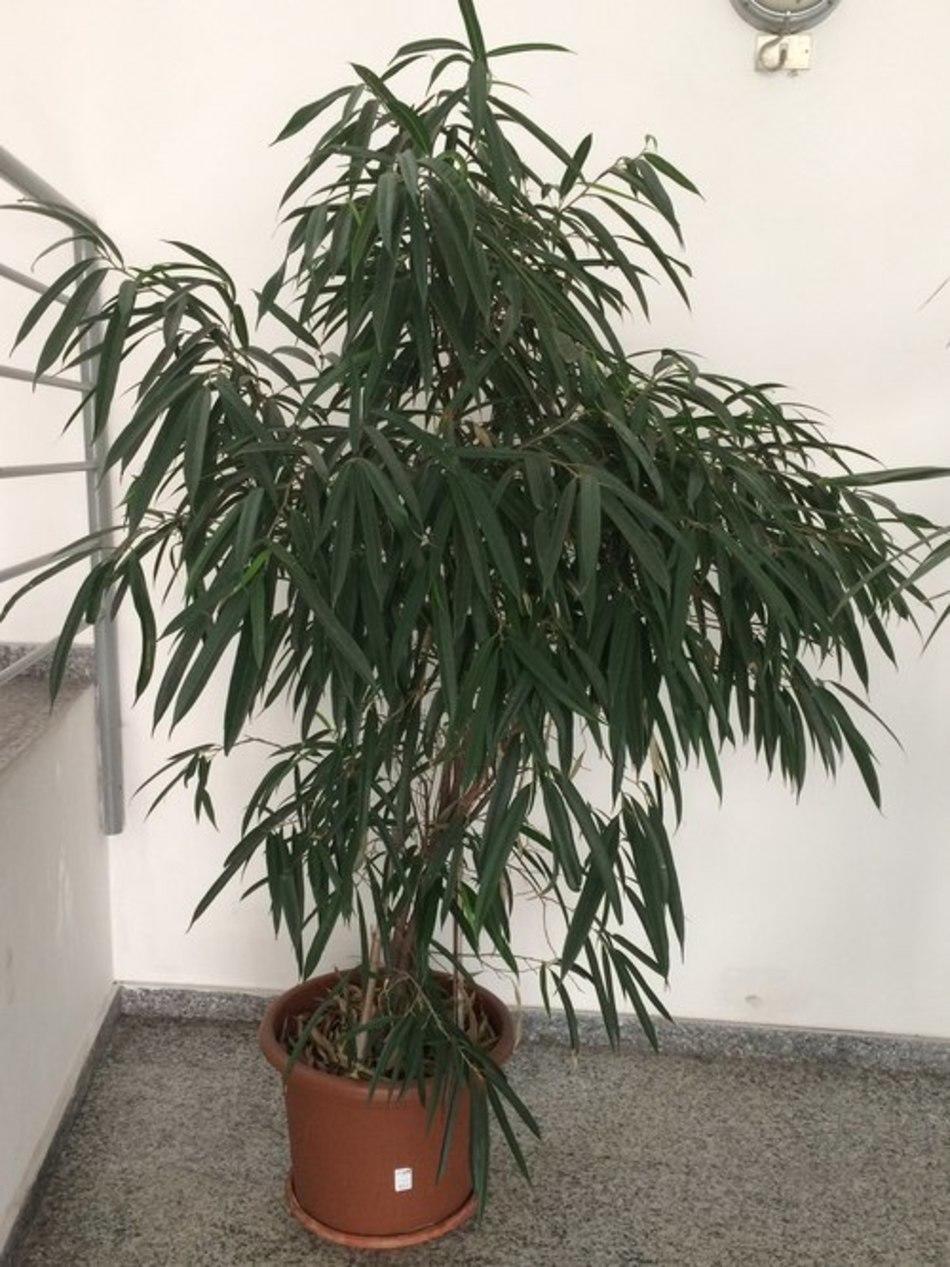
Ficus Alii gets rid of formaldehyde, xylene and toluene. Don’t let this plant sit in water and allow the water to dry to a depth of 1-2 inches of soil before you water the plant again. Ficus Alii does well in medium sunlight. The plant is dangerous for children and animals, so ensure you position appropriately to avoid any accidents.
13. Lady Palm (Rhapis Excelsa)
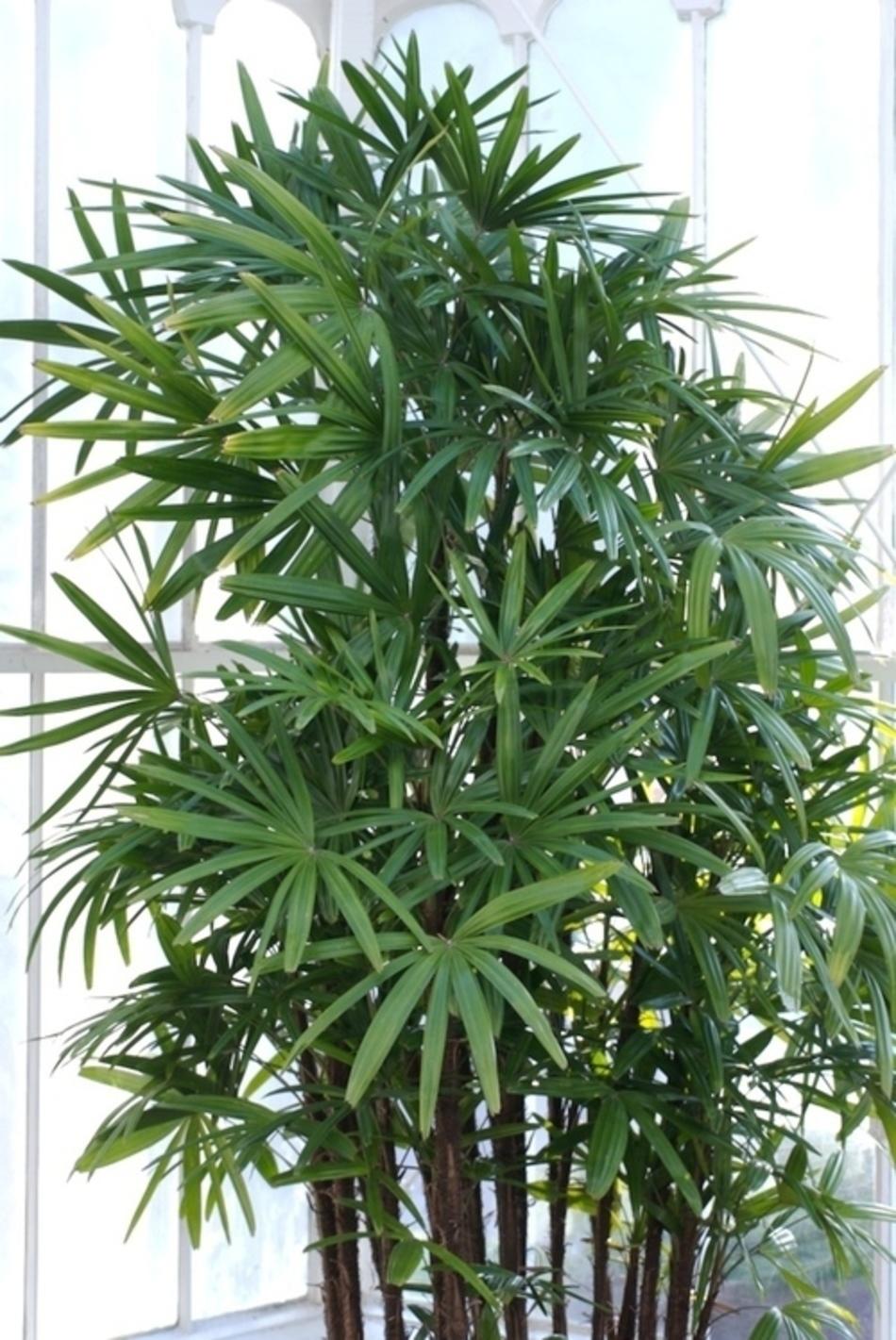
Lady Palm can clear your air of formaldehyde, trichloroethylene, benzene, and carbon monoxide. This plant can tolerate a wide variety of indoor conditions and is also very resistant to insects. They need a lot of water and bright but indirect sunlight
14. Kalanchoe
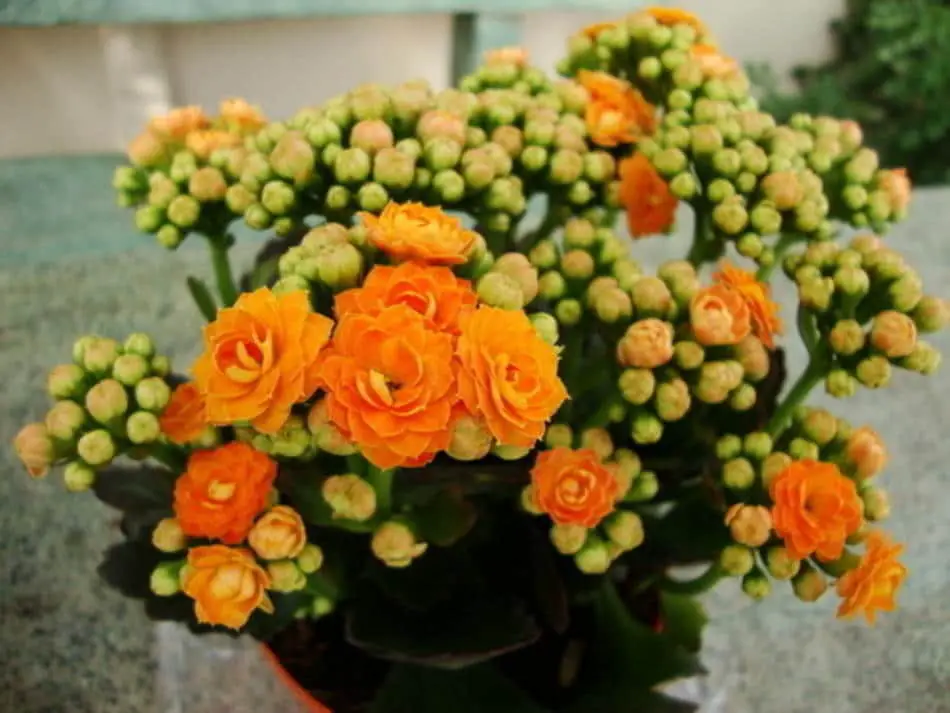
This plant removes formaldehyde from the air but its not the most effective at doing so. Kalanchoe only need water once a week and 1 to 2 hours of direct sunlight. Keep them in a shade where the can get some bright light. This plant mildly toxic and your cat or dog will most likely only suffer a tummy upset and some vomiting if swallowed.
15. Moth Orchid (Phalaenopsis)
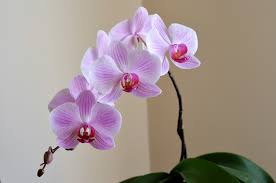
Moth Orchids only get rid of xylene and toluene. Water this plan every 7-10 days or as it dries out. The watering period doubles to 14-21 days if your plant is growing in moss. They need a lot of bright light but away from direct sunlight and they also love humidity. Keep this orchid away from pets and children as it is a toxic plant.
16. Pygmy Date Palm (Phoenix Roebelenii)
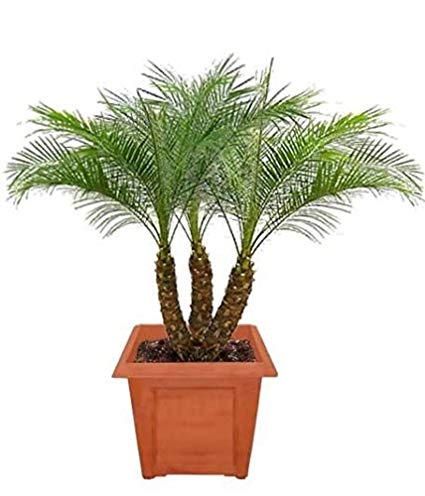
The pygmy date palm will take out formaldehyde, xylene and toluene from your air. Keep its soil moist but not soggy and keep it in bright light but not direct sunlight. The plant does well in moderate to high humidity levels and is safe with humans and animals.
17. Flamingo Lily (Anthurium Andraeanum)
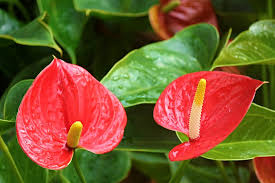
The flamingo Lilly absorbs, formaldehyde, ammonia, xylene and toluene. It prefers humid and shady environments. Never put it in direct sunlight. It likes a lot of water but over watering will cause its leave to turn yellow and eventually its roots will rot. Keep this plant away from children and animals as its toxic.
18. Parlor Palm (Chamaedorea Elegans)
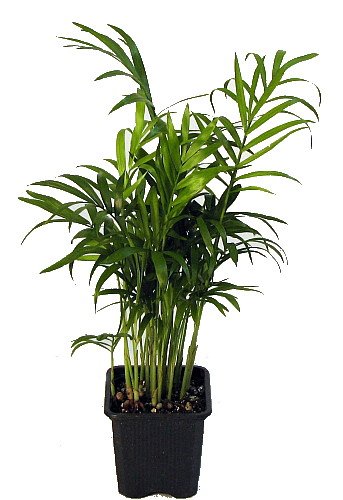
The parlor palm removes formaldehyde, benzene and carbon monoxide from the air. It will grow in the low light corners of your home with watering only once a week. This plant can grow in temperatures of between 12 to 26 degrees celsius. Parlour Palm is safe for humans and animals.
19. Boston Fern (Nephrolepis Exaltata)

The Boston Fern is great for moisturizing and cleaning formaldehyde, carbon monoxide and xylene out of your air. It grows best in the shade and you have to water it regularly. Its non-toxic and you don’t need to worry about leaving around pets and children
20. Devil’s Ivy, Golden Pothos (Epipremnum Aureum)
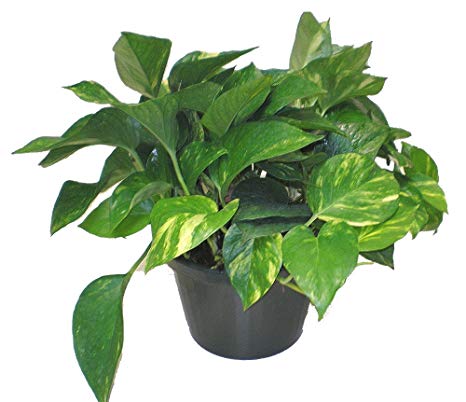
The Pothos or Devil’s Ivy is best for benzene or formaldehyde indoor pollution. It’s a great plant if you face a lot of traffic pollution in your home. If you are not careful it’s long, wandering vines, can slowly grow all over your room. You can trim the plant down as you need to keep it under control. The plant excels in rooms with indirect light and requires regular watering. That said, its leaves are toxic and if you have dogs, cats or small children, keep the plant out of their reach.
21. Money Bonsai or Guiana Chestnut (Pachira Aquatica)
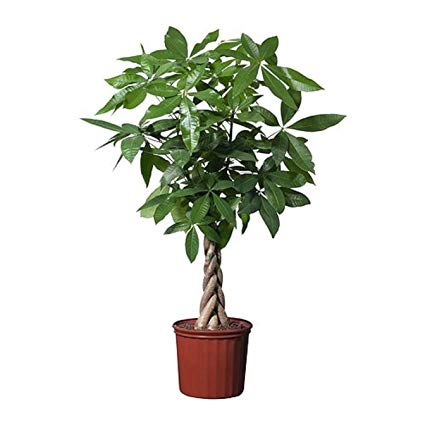
The Money Bonsai gets rid of Ethyl-benzene and Formaldehyde. This tree likes moist soil and indirect light and does well in high humidity. The Money Bonsai is also a safe tree to keep in a home with pets and children.
22. Weeping Fig (Ficus Benjamina):
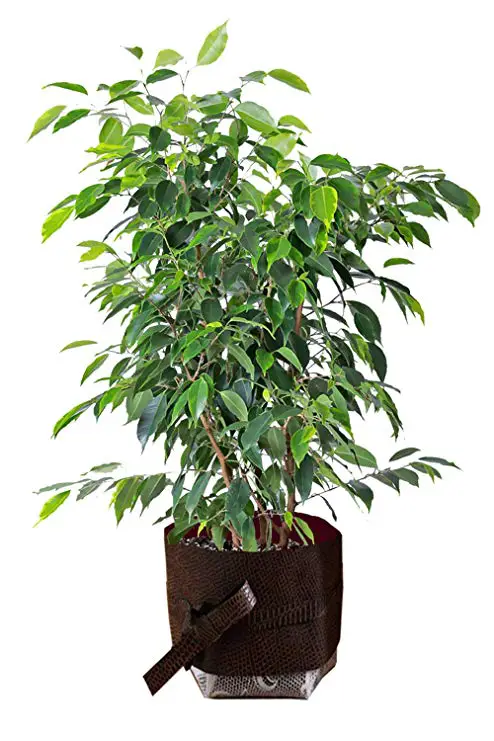
The weeping fig clears formaldehyde, xylene and toluene. Its works well for pollutants that typically are in carpeting and furniture. It is quite the sensitive plant. It does not like being moved around even if it’s just turning it around in its flower pot. Put this plant in place that gets enough bright light but has enough shade at the same time.
Also water it carefully and make sure the soil does not stay too moist or soggy. Some people even recommend a fast draining soil-less mix for its oxygen loving roots. If not to add on to your troubles, you have to keep this weeping buddy away from pets and kids as its toxic.
23. Janet Craig (Dracaena Fragrans)
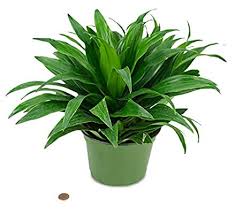
The Janet Craig eliminates formaldehyde, trichloroethylene and benzene. If you are in the market for a laid-back plant that won’t hate you for forgetting about it, then the Janet Craig is your best bet.
This plant can last long with remarkably little water and sunshine. Miss Craig will keep cleaning your air even when you have long forgotten her. Unfortunately the kindness of Miss Janet Craig comes at a cost and as you might have guessed Miss Craig is toxic.
24. Prayer Plant (Maranta Leuconeura)
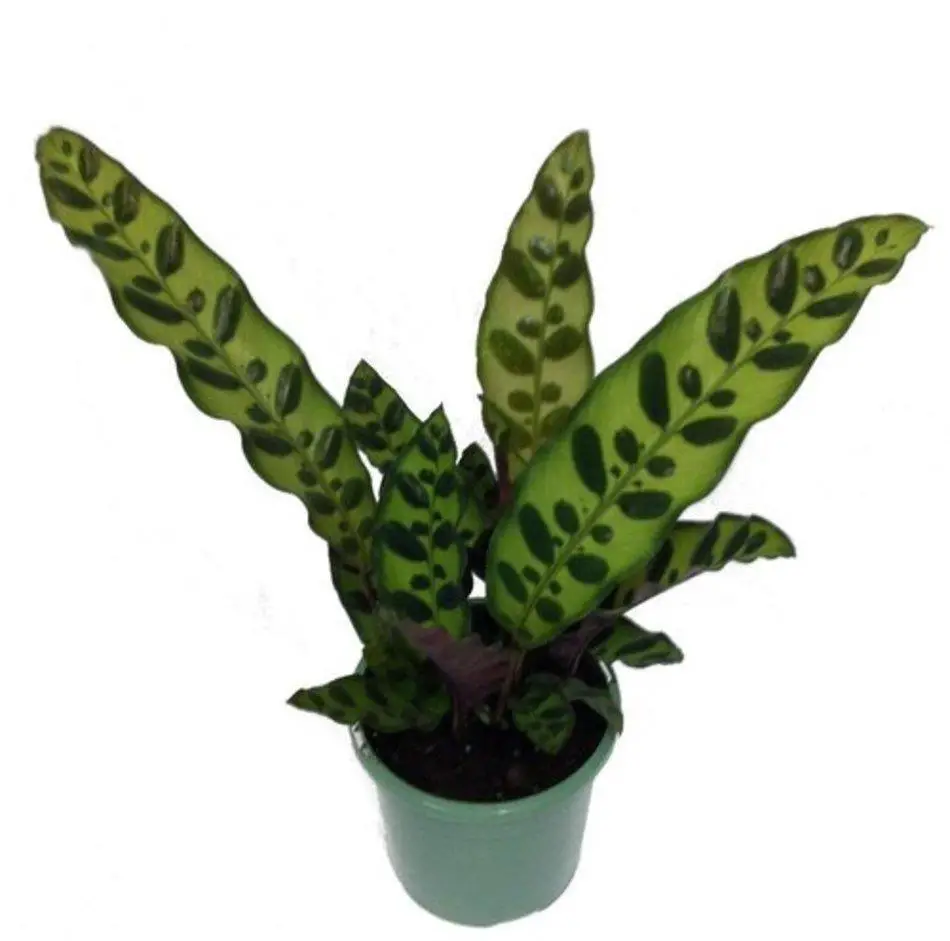
The prayer plant does well with formaldehyde. Its name comes from the way it folds up its leaves when is sun is setting and at night as if it were praying. If you a bit of experience with growing plants, you should be able to keep up with watering this one. Be mindful that it hates drying out so water it often.
The plant needs medium to high light in the shade. It will burn if you dare place it in direct sunlight. The prayer plant is not toxic and is safe to keep in your home even with animals and kids running around.
25. Radiator Plants (Peperomia)
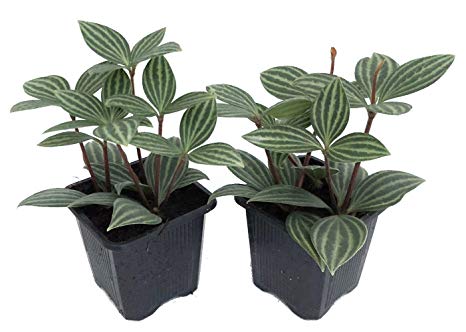
The Peperomia removes formaldehyde quite well from the air. It comes in over 1000 varieties but they all have the same care instructions and they are all part of the pepper plant family. Peperomias perform well in high to medium shade.
They like their soil moist, well-drained. Make sure you don’t over-water Peperomia or its roots will rot and also note that they are prone to mealybugs and aphids attacks. From a pet and child safety perspective this plant is nontoxic and safe.
26. Dumb Cane (Dieffenbachia)
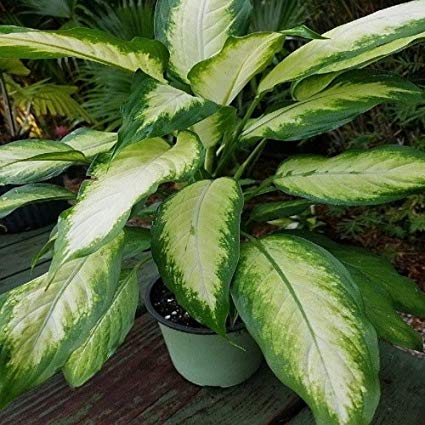
This plant will clean xylene and toluene from your air. Dumb Cane plants like their soil moist and well-drained. They grow best in low, indirect light, making them highly suitable as indoor plants. Your dieffenbachia can grow upwards of 4 feet tall if you take good care of it. Over-watering dieffenbachia is quite a common problem among plant owner so be sure not follow the trend. The plant is quite toxic so keep it away from pets and children.
27. Wax Begonia (Begonia X Semperflorens-Cultorum)
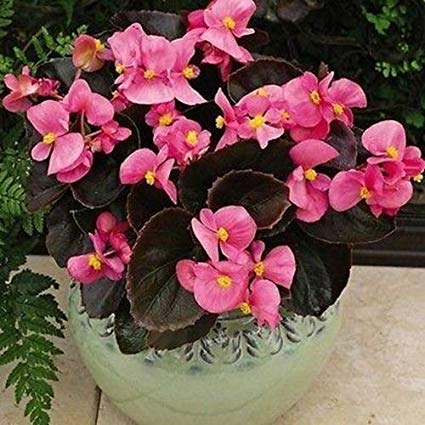
Wax begonias enhance air quality by cleaning out benzene and other chemicals from indoor air. If you take good care of Wax begonia they will produce beautiful white, pink or red blooms all summer long. This plant thrives in bright, indirect light and moist soil. Wax Begonia are highly toxic and must be kept out of reach of pets and children in your home.
28. Fiddle-Leaf Fig (Ficus Lyrata)
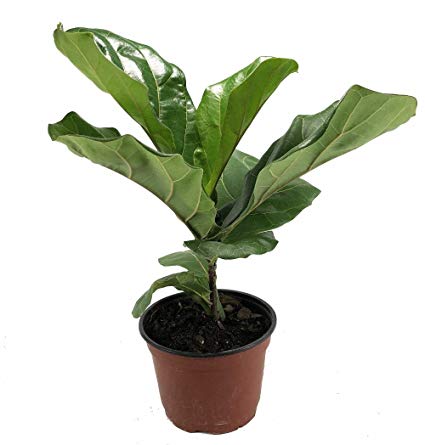
The fiddle leaf fig will detoxify your air of formaldehyde and xylene. For this plant to do well, ensure you keep it out of drafts in your home or office. You need to fertilize the fiddle fig monthly during its growing season.
This tree gives an awesome dramatic touch to a room or office space with its big leaves. They are nontoxic to humans but can cause digestive irritations if pets try to eat them. Like the weeping tree, you want to keep this tree in one to keep it growing well.
29. Azalea (Rhododendron Simsii)
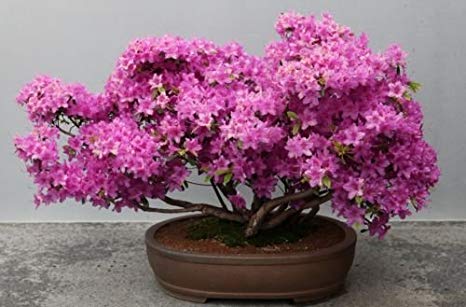
Azaleas clears formaldehyde. It grows in bright spots and and can specifically help you reduce reduce formaldehyde levels from materials like plywood and foam insulation. They are shade plants, making them great for indoor use as.
In spring this plant blossoms like a shrub and just looks stunning especially if you have multiple plants in the different colors of its flowers. You can trim the plant once its blooming season is over to keep it in shape. Azalea has life threatening effects if ingested in large quantities.
30. Warneckei (Dracaena Deremensis)
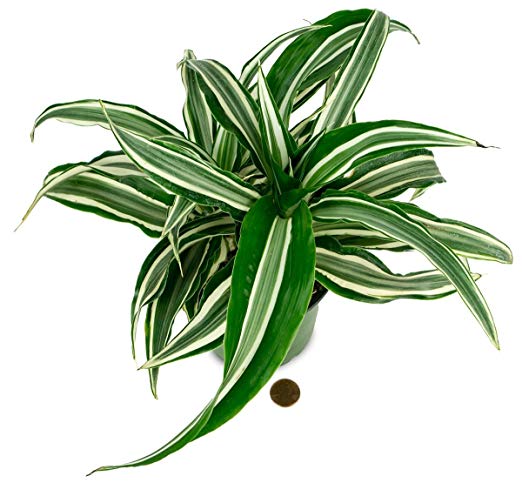
The Warneckei gets rid of formaldehyde, trichloroethylene and benzene floating around in your air. This dracaena grows in bright, indirect sunlight and can also grow well in artificial lighting, making it quite suitable for indoor use. When watering, allow it to dry out a little between waterings.
It does not need too much water and actually does well even when you occasionally forget to water Use purified water or rain water to water your warneckei dracaena because it’s sensitive to fluoride. The plant is toxic and you take the necessary precautions to avoid accidents.
31. Lady’s Slipper Orchid (Cypripedioideae)
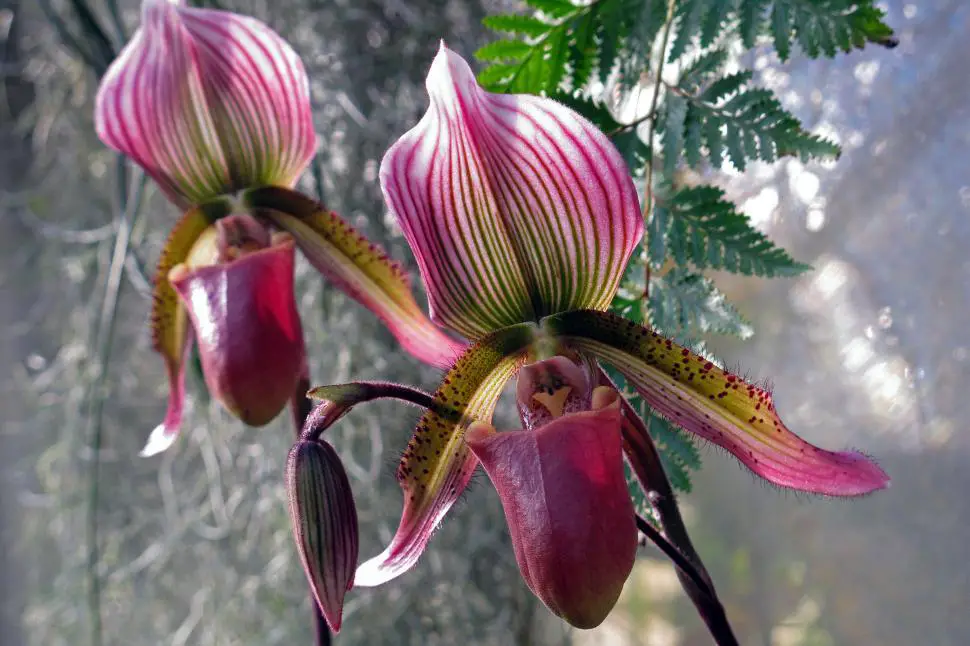
The Ladies’ Slipper Orchid will help you fight xylene and toluene. It a beautiful flower and will definitely bring life to a dull room. It dark green leaves also add beauty to the plant. This plant does not like direct sunlight so you have to place it in a shade away from windows.
Special care should be taken while watering a slipper orchid. Only water it once a week and use pure water. You can get pure water by exposing your tap water to air for a day or two by letting sit in an open container. This orchid is non-toxic but can cause severe dermatitis in some people so be careful when you handle them.
32. Indian Basil (Ocimum Tenuiflorum)
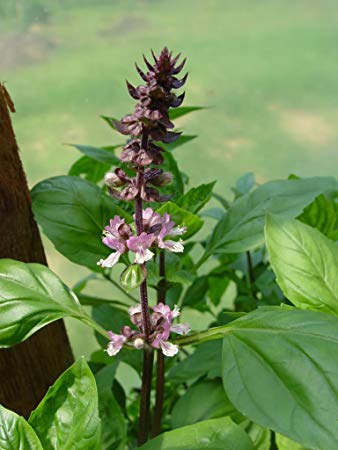
The Indian Basil is different from all the plants we have looked so far. Rather than absorb pollutants it releases essential oils into the air which fight bacteria and repel insects and produce a refreshing aroma.
This plant does well even after little-to-no maintenance and actually has a number of medicinal properties. You can plant it in a simple pot and provide it wit regular sunlight, by placing it on a sunny window and it will grow. Just be sure to water it regularly. Basil is edible and safe to keep around your home.
33. Areca Palm (Dypsis Lutescens)
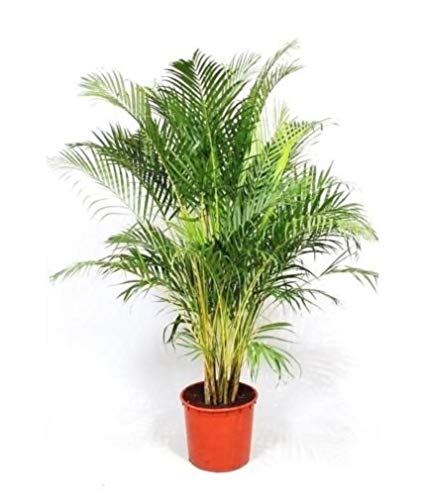
Areca Palm helps remove xylene and toluene from the air. It is also effective as an humidifier. It quite a classy palm and you can easily place it in your living room or office. It is also easy to look after and highly resistant to insect infestations.
The Areca Palm like moist to dry soil. It can grow up to 30 ft tall but if you put it in a small container, its crowded roots will help in limiting the size of the plant to fit in your home. The Areca Palm is Harmless to humans and animals.
34. Snake Plant (Sansevieria Trifasciata Laurentii)
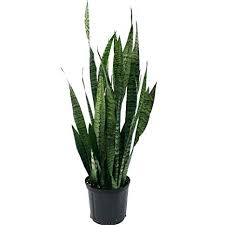
The snake plant is very good at reducing the amount of formaldehyde, benzene, xylene, toluene and trichloroethylene in a room. Like the Christmas cactus, at night, it also does the opposite of a normal plant by absorbing carbon dioxide and releasing oxygen.
Accordingly, it’s a nice to have in your room, giving you extra oxygen as you sleep.Snake Plant is quite a hardy plant, with the ability to tolerate almost any environment. It’s a toxic plant though, so again like other plants be careful with it.
35. Aloe Vera

Tests have shown that Aloe Vera helps to keep your home free from benzene which is commonly found in paint and certain chemical cleaners. Aloe plants like to be dry and warm, not wet and cold, so water only when you see that the soil in the pot is dry.
The best spot to keep this plant is a sunny window. Aloe in full shade will not thrive. Also, if you have just replaced the plants pot again, do not water it for two to three days. You should wait for its roots to settle. Although it is totally safe for humans, it is toxic for cats and dogs, so keep it out of reach of your pets.
36. Rubber Plant (Ficus Elastica)
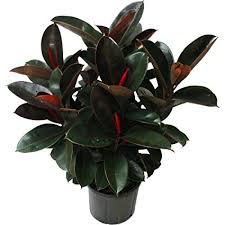
The rubber Plant has been proven to remove formaldehyde from the air. It can survive with less light than most plant of its size. It’s a great choice for rooms with dim light and cool temperatures.
In fact, its leaves actually grow larger when it gets less light! That said, they are quite moody plants when you move them around so you want to find them place where you can place them and not disturb them. They also don’t respond well to fluctuations in air flow or temperature.
37. Barberton Daisy (Gerbera Jamesonii)
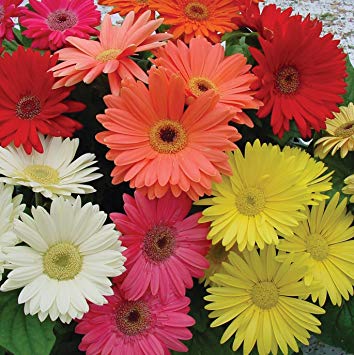
Barberton Daisies remove benzene, formaldehyde and trichloroethylene from the air. They are for the more experienced home gardener. Their soil has to be well-drained, so make sure you put them in pots with drainage holes.
You also have to give these daisies at least 6 hours of sunlight per day and mist them once or twice a week. With proper care, your plants brightly colored cut blooms can last as long as two weeks. You will also be glad to know for all your troubles with this plant that its non-toxic.
38. Chinese Evergreen (Aglaonema Modestum)
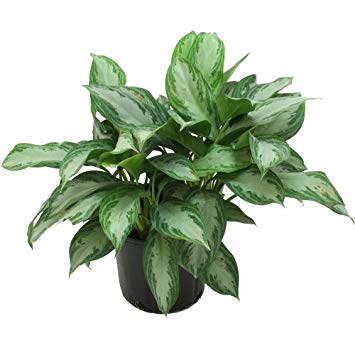
Chinese Evergreen are good at filtering out benzene and formaldehyde from the air. They succeed in low light areas and also manage to grow in places where other plants struggle. Their habitat is usually tropical, so they grow well in humid conditions. If you stay in a dry place or the air in your home is dry mist your chinese evergreen occasionally to maintain their moisture. Take note that Chinese Evergreen is a toxic plant.
39. Spider Plant (Chlorophytum)

Spider Plants remove benzene, formaldehyde, carbon monoxide and xylene from indoor air. They are very easy plants to take care of and grow. Simply by cutting off one of the spiders and putting it in another pot with soil, will give you a brand new baby plant to take care of. Spider Plants like average indoor temperatures and bright indirect sunlight. They are non-toxic and safe to place around your home.
40. English Ivy (Hedera Helix)

English Ivy clears Benzene, carbon-monoxide, formaldehyde and trichloroethylene from your air. It also helps eliminate some allergens and mold and clears airborne fecal-matter particles produced by microorganisms. The plant needs bright light to look fresh and can get attacked by pests if you do not provide them with enough light.
Water English Ivy’s carefully and let the soil dry for some time before watering them again. Ivy does not like standing water so ensure your Ivy flower pots are never waterlogged. English Ivy’s are toxic so take care where you put them.
41. Bamboo Palm (Chamaedorea Seifrizii)
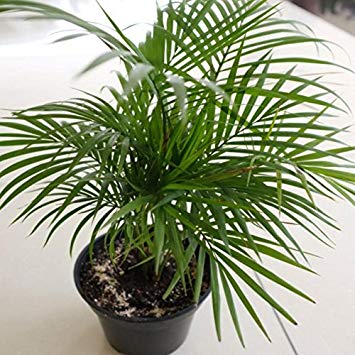
Bamboo palms are great for removing formaldehyde, benzene, trichloroethylene and carbon monoxide. Place bamboo palms next to lacquered furniture and it will vaporize harmful chemicals off-gassing from there. Bamboo palms prefer shady, indirect light, perform the best in warmer temperatures.
You also do not want to over-water bamboo palm or you could shorten its lifespan. If well looked after, your Bamboo Palm may even flower and produce small berries. If you manage to get berries, however, do not eat them as they are toxic. That said the plant itself is not hazardous to humans or animals and you can safely place it anywhere reasonable.
42. Dragon Tree (Dracaena Marginata)
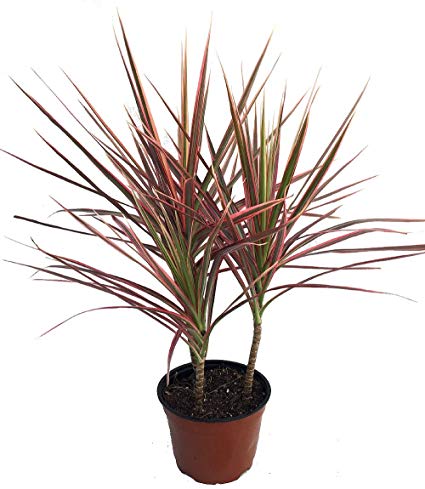
Another plant that can help you get rid of xylene, trichlorethylene and formaldehyde in your home is the Dracaena Marginata. It grows slowly, but it’s worth waiting for. This plant grows quite tall so make sure you have enough room for it. Place in a place with moderate sunlight and you can control its height by pruning.
The dragon tree grows best in moist soil. Make sure your soil does not get soggy and if you see the plants leaves turning yellow you are either over-watering it or you didn’t give it enough drainage. The Dragon Tree is also a toxic plant.
43. Pot Mum (Chrysanthemum Morifolium)
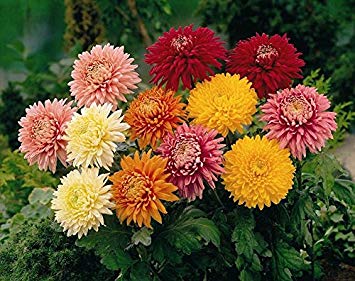
The pot mum is not only a beautiful flowering plant but also does extremely well at removing formaldehyde, xylene, benzene, trichloroethylene, toluene and ammonia from indoor air. Sadly, pot mums only last about 6 -8 weeks indoors for as long as their bloom carries on.
However if you live in a warm are you can preserve them by planting them outside and bringing them back in when the bloom again. Like many of the plants I have touched on, pot mums are also toxic and you need to be cautious if you have little ones running around around.
44. Peace lily (Spathiphyllum “Mauna Loa”)
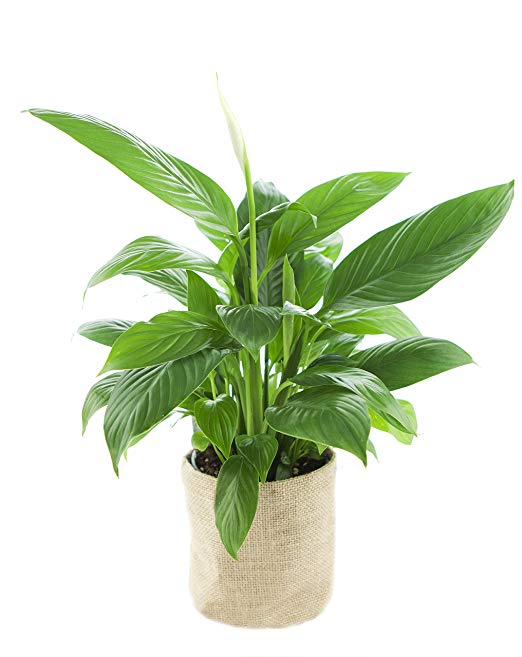
As a common house plant, the Peace Lily has a strong ability to eliminate benzene, formaldehyde and trichloroethylene from the air. It can also get rid of toluene, xylene and ammonia and by wiping the dust build up on its leaves often you maintain its effectiveness in absorbing these pollutants over time. Not to say you should neglect it but It’s a hard and sturdy plant that can last a while before in need any maintenance if you neglect it.
When it starts to look a little droopy, you know you have left it for a while and it’s getting thirsty. It blooms beautiful, tall, white flowers and the moisture given off by these striking flowers can boost your room’s humidity by up to 5%. Unfortunately it’s a toxic plant and you have to be extra careful with it if you have kids and pets in your home..
45. Philodendron (Philodendron Oxycardium)
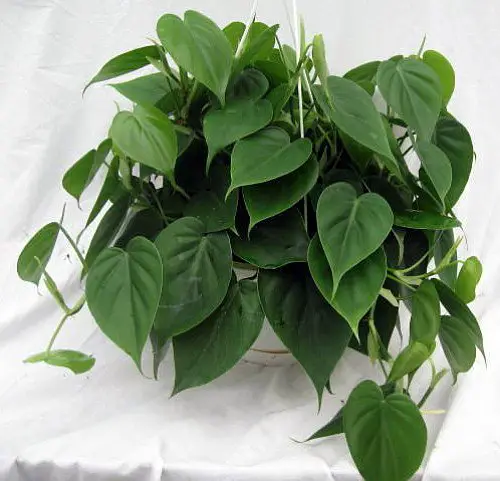
Philodendron clears various air pollutants but its known as a ’workhorse’ plant for filtering out formaldehyde. It has beautiful heart shaped leaves that spin around and twist well around a pole giving a nice decorative effect. It is an easy plant to care for. It likes low light areas and moist soil. However, philodendron is toxic and you have to keep it away from pets and kids to avoid any mishaps.
46. Umbrella Tree (Schefflera)
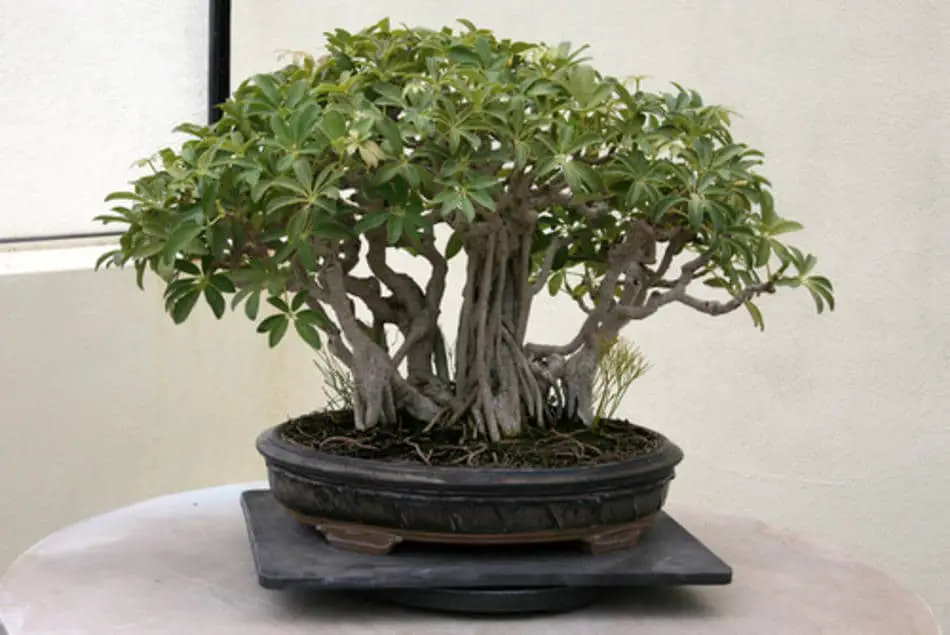
This plant has been proven effective for absorbing formaldehyde, toluene and benzene from the air. Water the umbrella tree about once a week. Be careful not to get too generous with the watering though as this plant does not grow well with too much water. This tree can shoot up to 6 feet tall, but you can limit its growth by trimming off new growths. Take note that the tree is prone to spider mites and scale and that the plant’s leaves are toxic.
The Umbrella tree brings us to the end of the list. Plants are an awesome natural way to improve indoor air quality but you also need to be aware if you do not use them properly they can actually worsen your indoor air quality. Plants can attract insects and mites whose fecal matter can add to the existing allergens in your home, moreover flowering plants produce pollen.
So before going the plant route, do some deeper research on plant pollution. Personally I would make sure I have an air purifier first before introducing plants as an extra measure for pure air in my home. That way if the plants don’t work out for any reason, I always have an electrical air purifier purifying my air in the background any way.

